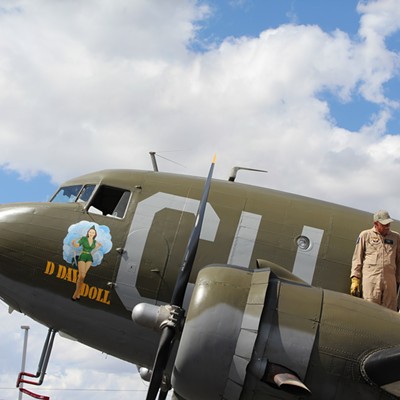Early railroaders developed their own language as soon as the original little steam engine rolled down tracks in England nearly 200 years ago. By the time the first train pulled into remote, anxious and excited Tucson on March 20, 1880, special railroad lingo must have been well-established.
By the end of the 19th century, the terminology was being discussed in the book Tramping With Tramps. Calling it a "peculiar language," author Josiah Flynt states: "It came into existence primarily as a means of talking in public without being understood by others than those intimately connected with the life."
"If someone was part of the rail culture," observes Tucson historian Bill Kalt, "they knew the slang. It was commonly used, and everyone from school kids to granddads knew what the terms meant."
With the Southern Pacific Railroad Company being Tucson's largest employer for several decades, the language of the railroad was an important component of local life. "It was an outgrowth of the whole mystique around the railroad," Kalt says. "In a way, it was the glue of the subculture."
Having conducted 35 interviews with retired Tucson railroad employees, Kalt says he at first had to "bug the hell" out of them to learn what the terms meant. During the process, he found that some of the lingo had disappeared from usage.
"Ash cap" was a locomotive fireman who stoked the blaze to keep the engine running, thus covering his cap with ash. But with the replacement of oil-burning steam engines by diesel-powered locomotives in the 1940s and 1950s, the term was no longer appropriate.
"Flimsy" is another slang word which has gone out of common use. It referred to the orders written on thin slips of paper and then grabbed by a train crew as they rolled through a station. Kalt points out that with the introduction of computerized central-control systems, the railroad no longer has to rely on a "flimsy."
In early 2005, Metzger published a pamphlet entitled Speaking of Trains. Compiled by a well-traveled train hopper from Minnesota, it contains almost 500 definitions of terms used by railroad employees and those who ride the rails for free.
Using this dictionary, translation of the railroad language becomes possible. "Hog heads" are engineers; "pull the pin" refers to uncoupling cars; "cut out" is switching cars off a train; and "kicking" means pushing an uncoupled car to roll on its own.
The mostly young people who still jump onto freight cars by "catching out" rides wherever the train may take them have their own distinctive terminology. "It's a way to keep the language alive," Metzger observes, "by bridging the gap between old and new."
There are still "tramps" who frequently travel by rail, along with young "road kids" who hop on trains occasionally looking for a "Cadillac" ride. These smooth trips often come on a "Canadian grainer," or freight car which offers a particularly hospitable abode for the illegal passenger.
Train hoppers of every age don't want to be nabbed by "bulls," or railroad police. If they are, they'll either be given a warning and escorted off company land--or taken to jail.
Usually, "bulls" are reportedly kind toward "rail kids." An occasional train hopper named Milenko confesses of "bulls": "If you're real nice to them, they'll be nice back. They just want you off railroad property."
Having once lived in Tucson, Milenko was working elsewhere last year when interviewed about why he rides the rails.
"It's pretty fun and exciting," he says, "and adds a little bit of spice to life."
Commenting on the tedium which accompanies waiting for a freight train to depart and then having it move slowly toward an often unknown destination, Milenko continues: "It can be boring sitting around. When the weather is bad, you can get really wet. It's not all fun and games."
Several years ago, Milenko put on paper his introduction to Tucson. Contained in a volume published by Metzger, There's Something About a Train, it provides an outsider's look at our community.
"What the hell is this?" Milenko asks in an LSD-inspired stupor about the huge red sculpture in front of the main library. "It looks like a metal dinosaur."
Leaving downtown, Milenko crosses a dry desert wash. "The Santa Cruz 'River,'" he writes, "the first river I've seen that doesn't have any water in it."
Climbing up Sentinel Peak to spend the night in the center of the "A," Milenko observes of the desert vegetation he spots along the way: "Everything in every way growing and leaning and spikey and smooth and green and yellow."
The next day, this desert novice would leave Tucson; he eventually returned and lived here for five years. When interviewed in 2005, Milenko said he didn't have time for train hopping any more, but definitely planned to do it again. Or, as those who travel by rail might say: "The former road kid wants to be a tramp one day."












